Commemorating two decades of ORPRN
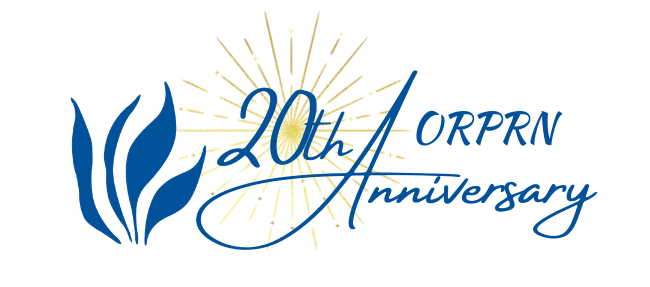
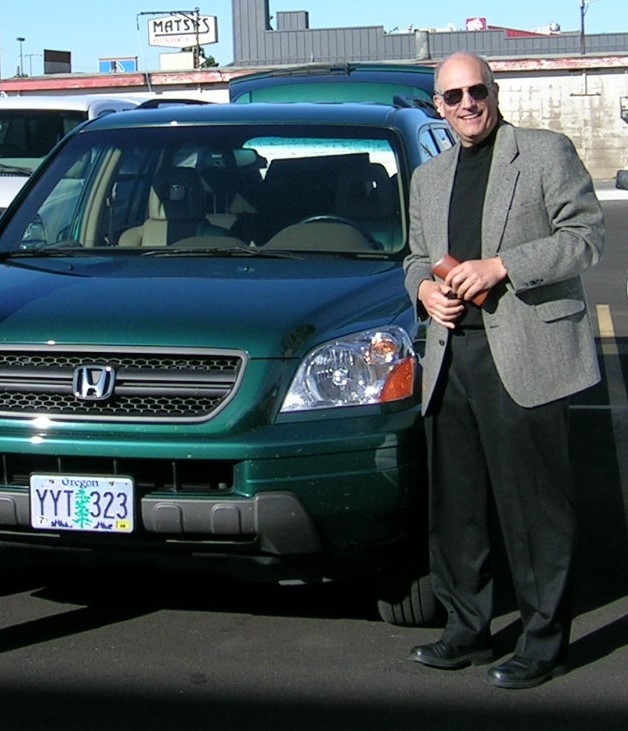
Happy 20th Birthday to the Oregon Rural Practice-based Research Network! As the director of ORPRN from its inception in 2002 until I retired in 2018, I had a unique window into the development and growth of the organization. The story of ORPRN is one of trusted relationships, developed and sustained over two decades.
ORPRN, with support from OHSU and the State of Oregon Opportunity bond initiative, started with a meeting of six rural Oregon family physicians in the basement of Emma Jones Hall at OHSU. The conversation centered on how to go about connecting rural Oregon primary care practices through research projects.
ORPRN started small, with nine rural communities—Reedsport, Baker City, John Day, Lakeview, Union, Elgin, Hood River, Lincoln City, and Pacific City. Over the next two decades, the ORPRN team grew those numbers by logging windshield miles visiting practices across the state to build trust and connection. ORPRN now partners with 281 practices with more than 700 primary care clinicians caring for 600,000+ patients across Oregon. I drove a fair amount of those miles myself: The odometer on my 2002 Honda Pilot that turned over to 210,000 miles at the end of 2018.
By making “house calls” to our practices, we built an understanding of what will improve the lives of clinicians, staff, and their communities. We became experts in balancing “the ask” of participation in our research projects with recognizing and responding to practice needs. Our boots on the ground are a network of Practice Enhancement Research Coordinators (PERCs), working and living across the state. The PERCs develop an understanding the practice’s values, assets, and preferences. We respect practice wisdom and connect that knowledge with our research. It is our PERCs that make ORPRN research possible.
The health care landscape has changed dramatically over the past 20 years. Independent, physician-owned practices are in the minority, representing a third of practices, down from two-thirds of practices in 2002. Recruiting clinicians and practices for research studies is more difficult and expensive. The scope care by family physicians is changing with an office-based practice, dominated by chronic illness care, the electronic health record, and population health metrics.
ORPRN has adapted and met the challenges of the current health care landscape by helping practices improve care for patients and communities in six ways: 1) practices are less physician-centric, implementing team-based care; 2) care coordination is improving the care of complex patients; 3) there is a broader-scope of responsibilities for staff and non-physician clinicians; 4) practice managers and administrators are important change agents; 5) practices are making time for quality improvement; and, 6) linking community health to primary care practices is becoming a priority for some exemplar practices.
I am proud to be associated with a research organization centered on real-world practices, making a difference in the quality of life for Oregonians. At age 20, ORPRN has grown up into a high value asset for OHSU and the State of Oregon.
Reflections from Sandra Dunbrasky, MD
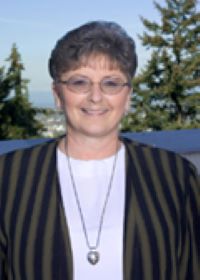
Sandra Dunbrasky, MD, retired in March, 2022. Sandy has been one of my heroes I have had the privilege of working with during my tenure with ORPRN. Her leadership dates back to our early days as seen in this 2004 photo taken on top of the fourth-floor deck at Emma Jones Hall, OHSU.
Sandy has consistently showed up for studies during her sixteen-year tenure with ORPRN. We all learned how to do a better job of taking care of children and our communities. I asked her to share her story. Below is what she sent me. -- L.J. Fagnan, Founding Director, ORPRN
My dream since I was 10 year old was to be a doctor. My mother had a sixth grade education and my father had a third grade education. Their dream was for their children to graduate high school. College was never discussed in our home; that was for people who had money.
I graduated high school, got married and had 2 children, but my dream never left. When our local community college developed an associate of science in nursing course, I decided to get my RN degree. I worked as an RN for 3 years and one day came home and told my husband that I really wanted to be a doctor. His response was , "then go be a doctor".
We sat down with our children who were then 12 years and 13 years old and told them what I wanted to do and how it would impact them. They were very supportive and said, "go for it mom." So I went back to college at the College of Idaho and completed my premed requirements. It was a private college and very expensive but I was given a full-ride scholarship so I attended college full time and worked as a nurse full time.
I was accepted at OHSU and went to school there Monday to Friday then drove home to Ontario to work at the hospital Saturday and Sunday then back to Portland on Sunday night. My third and fourth years I did not work anymore. During my fourth year, both of our children were in college so we were on a rather tight budget but persisted and I completed medical school and was accepted at OHSU for pediatric residency.
When I completed my residency, I arrived in Ontario in 1994 and opened my practice in a small office with 2 exam rooms. That quickly grew and I hired a PA then over the years it continued to grow. I was a pilot when AAP introduced the medical home and became a medical home in 2000. When I sold my practice, there were 8 providers in the clinic.
ORPRN was a huge contributor to the success of the clinic. I learned so much for that partnership and ultimately became a Rural Health Clinic. From 1994 until retirement I was also the Medical Director for the STAR Center. (Suspected Trauma and Abuse Resource Center). From 2001 until now I was also a member of the National Disaster Medical Team and went to many disasters including lots of hurricanes, Ivan, Katrina (6 weeks there), Rita etc, the Tsunami in American Samoa, Super Storm Sandy, Irma and Maria hurricanes.
I have been on several COVID missions including San Antonio when the evacuees from Wuhan China were brought back to the states. I also have worked with unaccompanied minors that came across the border over the last year. Since the big earthquake in Haiti I have been doing medical missions in the far reaches of Haiti and cared for many there as well as learned so much about the trials of being the poorest country in the western hemisphere. I cannot say what my proudest accomplishment would be. I always felt that I was put on this earth to be a doctor taking care of children. It took awhile to get it done but I did accomplish what I set out to be. I think that is what I am most proud of. We are retiring to our cabin in the mountains of Idaho and plan to do some travelling and just enjoy the mountains and our family.
ORPRN and LJ Fagnan had a big influence on my career and the success I have had. ORPRN taught me so much and made me a better doctor and better businesswoman. Both were needed to do what I did. Thank you so much.
Reflections from Robert Law, MD
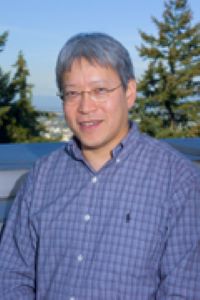
It has been a true privilege to serve on the ORPRN Advisory Board and before that the ORPRN Steering Committee. [When I first joined the ORPRN Steering Committee] I think both Scott Graham and I felt being part of any endeavor involving LJ Fagnan would have many ongoing benefits. ORPRN has been a true network in the most fundamental sense. It has connected and built a supportive community of clinicians and others involved in rural health care with an interest in research and contributing to the broader good. It has been gratifying to have been part of the growth of ORPRN from its beginning with 9 rural practices and seed money from the Oregon Opportunity initiative to its current status as one of the most prominent practice based research networks in the country with multiple large scale grants, programs, and projects involving several hundred practices statewide.
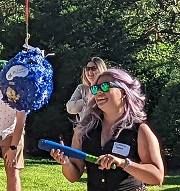
ORPRN staff, leadership, and families gathered at Portland's Peninsula Park on June 23rd, 2022, to commemorate the organization's 20th anniversary.
It was a chance to socialize for co-workers who may have only been acquainted online to meet in person.
The event included icebreaker games, speeches, a catered dinner, and even a Seabiscuit piñata.
Employees finished up the day with an ORPRN themed cake. Gorgeous weather, beautiful babies and children, and a rich camaraderie contributed to the event's success.
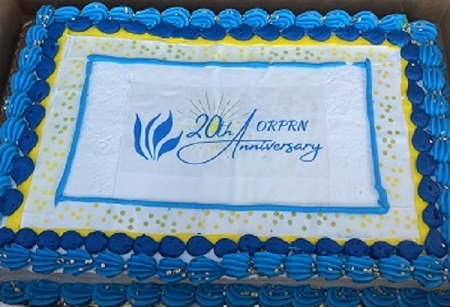
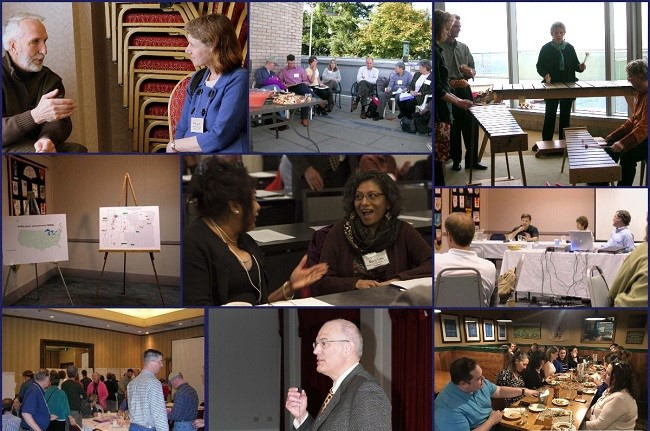
From its founding, ORPRN has been imbued with a deep sense of the importance of partnerships between primary care across Oregon and the researchers working to improve healthcare for all. Through convocation, the these partners could come together for conversation, education, and celebration.
The first ORPRN convocation held in the fall of 2002 was a series of roundtable discussion groups between clinicians and researchers, but by the next year, a more formalized slate of presentations was debuted. At that convocation, held in October of 2003 in Newport, Oregon, there were sessions devoted to "Rural Practice Survival Issues" and "Rural Practice and Communication Technology," as well as a keynote address on behavior change delivered by Evelyn P. Whitlock, who later went on to become the senior scientific advisor at the Patient-Centered Outcomes Research Institute (PCORI). Those topics remain as relevant today as they were two decades ago.
Each year, ORPRN convocation continued to strengthen relationships between ORPRN researchers and Oregon primary care. Presentations explored topics vital to clinicians, including practice transformation, citizen engagement, pharmaceutical industry/clinic relationships in Oregon, and integrating community health workers.
In 2010, ORPRN joined forces with the Oregon Academy of Family Physicians (OAFP) and began hosting convocation on the eve of the OAFP's annual meeting, a partnership that has continued to deepen. Since 2020, ORPRN convocation activities, like the annual student and resident poster forum, are folded in to the OAFP's Annual Conference, allowing for an even richer connection between Oregon primary care and ORPRN.
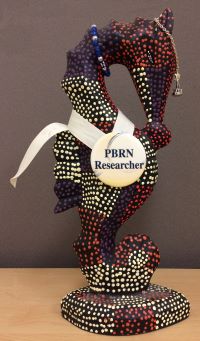
Did you ever wonder why ORPRN has been more successful than most organizations at securing the grants and contracts for which it applies?
Of course ORPRN’s success starts and ends with its dedicated, hardworking and intelligent research team. But longtime ORPRN staffers know that there might be an unsung team member quietly working some behind-the-scenes magic to swing things our way.
Meet Seabiscuit.
This carved wooden seahorse sculpture has been with ORPRN almost since the beginning.
"Each time we submitted a grant, we would gather around Seabiscuit in the conference room and place something near the statue for luck," says Anne King, ORPRN's associate director for healthcare initiatives. "Sometimes it was a travel memento from clinic visits around Oregon that helped shape the grant; other times it was a piece of art crafted by an ORPRN staffer."
Seabiscuit found his forever family in an unusual way. Legend has it that in 2002, he was gifted as part of ORPRN's first annual holiday party and gift exchange and left on the shelf at the Hillsdale restaurant where the party took place. A year later, when the ORPRN staff was back for their annual event, the restaurant owner came by the table with a gift for ORPRN founder L.J. Fagnan: It was Seabiscuit, and from then on, ORPRN knew he could not be left behind.
Celebrating a grant proposal with Seabiscuit really got started when ORPRN applied for and was awarded the grant to enroll communities in the National Children's Study in 2004. King notes that "It was a way for everyone to come together and bond after a rigorous grant development process. It made us feel like a family."
Thank you Seabiscuit!
The ORPRN Advisory Board has always been an integral part of ORPRN. When six rural Oregon family physicians met in the basement of OHSU’s Emma Jones Hall and dreamed up a primary care research organization, one — L.J. Fagnan — would go on to found ORPRN, and the other five would become part of ORPRN’s first steering committee.
When ORPRN was a fledgling research center, the steering committee was a key fixture, acting as a sounding board for Dr. Fagnan and a decision-making body for ORPRN as a whole. They met monthly and voted on each and every project ORPRN took on, although they didn’t comment on personnel or financial matters. All members were physicians from practices in rural Oregon.
Since then, that body has seen some changes but has remained vital for the success of ORPRN. Robert Law, MD, who has attended steering committee meetings since 2002, notes that being involved with ORPRN as a board member has been very positive:
“It has been gratifying to have been part of the growth of ORPRN from its beginning with nine rural practices and seed money from the Oregon Opportunity Initiative to its current status as one of the most prominent practice-based research networks in the country with multiple large scale grants, programs, and projects involving several hundred practices statewide.”
One big change came in 2019, when it was recognized that ORPRN had so many grants and contracts coming through that it had become burdensome for the steering committee to evaluate each one. To help ORPRN be more nimble and free up the steering committee to focus on providing big-picture guidance, it was decided that the steering committee would transition to an advisory board. According to meeting notes at the time, the goal of the advisory board was to provide “visioning and directionality from a ‘boots on the ground’ community perspective” and “help steer conversation on what matters to practices and communities."
At the same time, it was agreed that the newly designated ORPRN Advisory Board would consider adding non-clinical members to bring new viewpoints to the advising of ORPRN. Since then, medical students and residents, non-physician care providers and office staff, and community partners and patients have all been invited to serve on the advisory board, offering a renewed richness of perspective.
LeAnn Michaels, ORPRN’s director of clinical trials, has had a front-row seat to the inner workings of the steering committee/advisory board since 2009, and she describes what she thinks makes the advisory board an important component of ORPRN’s success:
“It’s made up of people who are interested in contributing their time, energy, and passion for improving primary care in Oregon.”
To read more about the ORPRN Advisory Board and find out how you can apply to become a member, click here.
ORPRN’s mission of improving healthcare through working with primary care practices across the state wouldn’t be possible without the legion of PERCs (Practice Enhancement Research Coordinators) who have crisscrossed the state providing practice facilitation, supporting research, and creating lasting relationships with primary care.
The PERC role has been part of ORPRN almost since the beginning — the first PERCs came onboard in 2004 with a mandate to “[act as] a liaison between practices and the network, to know the community and develop a relationship with those practices that want to work with ORPRN,” according to archival documents. That early directive to build meaningful connections between ORPRN and Oregon’s primary care clinics has informed this work for close to two decades.
Today, 12 ORPRN PERCs still travel the state to bridge academic research and primary care with a goal of using coaching, education and practice facilitation to support Oregon’s primary care clinics in reaching their goals.
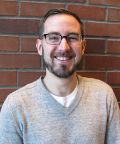
Cullen Conway, a PERC with ORPRN from 2015 to 2019 and now a manager at Monument Analytics, emphasizes the fact that PERCs are the glue that created bonds between ORPRN and practices, but also among other practices around the state: “I often found that the clinics taught me as much as I was able to share with them, and bringing that knowledge back to ORPRN to be disseminated, as well as to other clinics to be leveraged in their care processes, was always amazing.”
That bi-directionality of information sharing goes to the root of ORPRN’s commitment to ground-up practice-based research. The work that PERCs do helps level the playing field by highlighting the experiences and perspective of primary care clinics and bringing that perspective to academia.
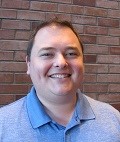
Steven Brantley, a third-year medical student who reports that his tenure as a PERC at ORPRN helped solidify his desire to be a physician, also cites being able to problem-solve with clinics as being a formative part of his experience at ORPRN: “My favorite part of the job was working with clinics to find ways to streamline and get them to accomplish new milestones with as little disruption to their routine as possible. I liked working with resource-poor sites and finding ways for them to achieve their best outcomes with what they had available."

Beth Sommers, now the director of innovation and improvement for CareOregon, was an ORPRN PERC from 2012 through 2017. She notes that part of the work of being a PERC was helping ORPRN find the delicate balance between the rigorous demands of research and the real-world capacity of clinics.
Sommers credits her work as a PERC for giving her a base for success in her current position: “I formed relationships that I brought with me to CareOregon and created frameworks for thinking about the development of new models of quality improvement that benefit Oregon healthcare providers and ultimately their patients.”
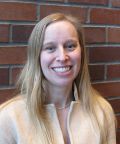
Melinda Davis, ORPRN's associate director of research initiatives (and a former PERC herself) notes that those relationships formed between PERCs and their primary care clinics mirror those formed between clinicians and their patients in that caring over time is a key component of both: “I loved the relationships that I built with my clinic and community partners in NE Oregon while serving as a PERC — these relationships (and new ones I’ve built across the state) are what still drive me today.”
Conway has also carried his experiences as a PERC forward into his life — especially lessons about the power of stopping to listen and reflect: “Sitting down with a clinic and asking them why they have a specific workflow and simply creating the space to consider alternatives was always very powerful. It has led me to take time every so often to do the same thing — to stop and reflect on how I'm going about certain things in my life and how I might do things differently.”
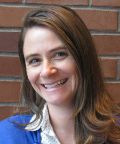
For PERCs embedded in the communities they serve, the relationships formed are pivotal. Laura Ferrara, an ORPRN clinical research associate who has served as a PERC in her community of Hood River, says that one of the things she values the most is working in her region: “I really appreciate getting to know how healthcare is delivered in my community and to know that maybe I have an effect on that. That care is going out to my friends, my family, and the people I know, and that is important to me.”
As we commemorate 20 years, ORPRN acknowledges how these connections that PERCS have forged — to practices, to excellence in research, to community — are vital to our overall success as a research organization.